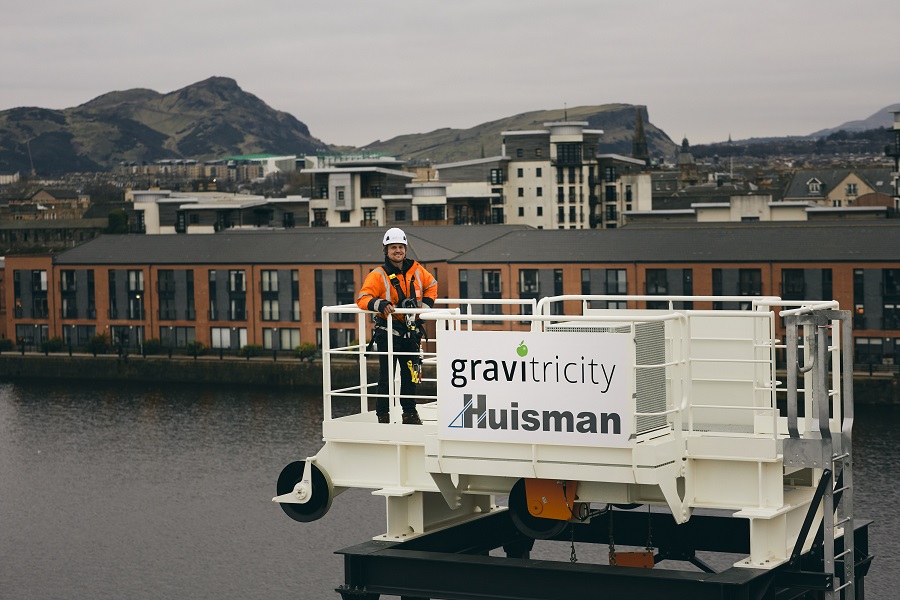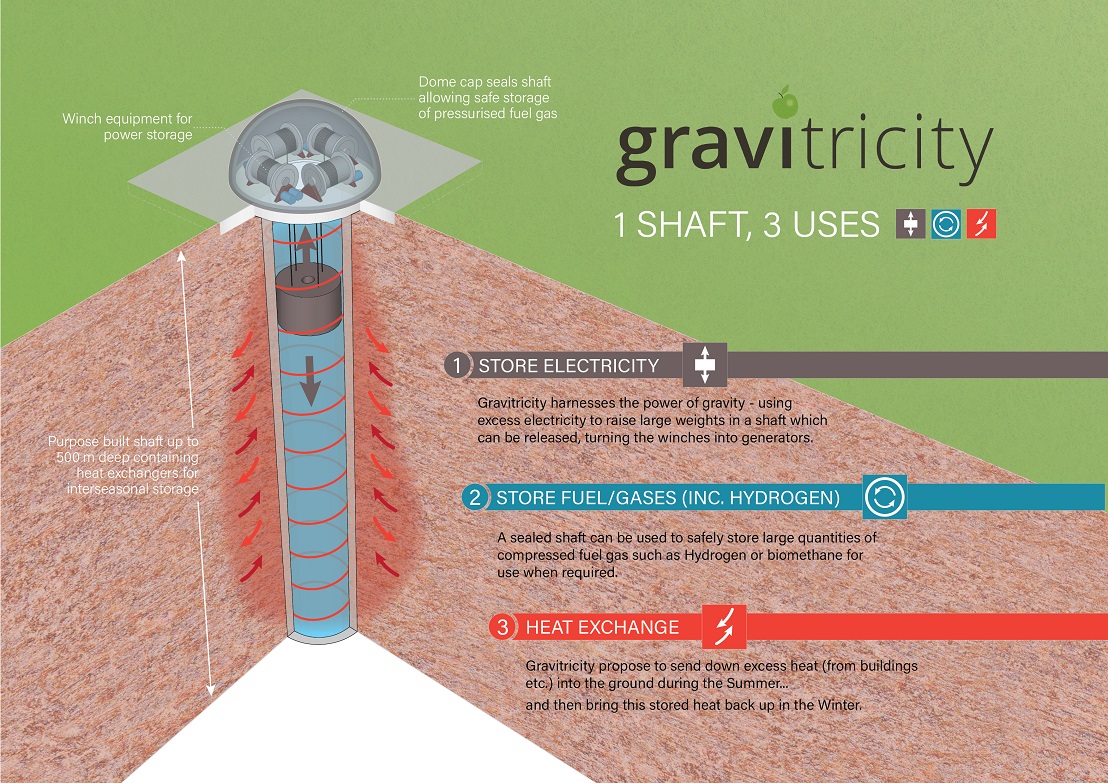Gravitricity and Arup secure £300k grant to develop below ground hydrogen storage

Miles Franklin, lead engineer
The towns and cities of the future may be able to rely on green hydrogen stored below ground, if a newly funded UK project succeeds.
Gravitricity and Arup have together secured £300,000 from the Department of Business Energy & Industrial Strategy (BEIS) to study the feasibility of storing hydrogen in purpose-built underground shafts.
Edinburgh-based energy storage specialists Gravitricity and global built environment consultancy Arup will collaborate to deliver a complete system design and commercial feasibility report for the novel idea, as well as identifying a potential site for their underground hydrogen store. The design will also include integration with gravity energy storage and inter-seasonal heat.
The parties been awarded £299,985 in Phase 1 of the BEIS Low Carbon Hydrogen Supply 2 (HySupply 2) Competition which aims to support innovation in the supply of hydrogen, reducing the costs of supplying hydrogen, bringing new solutions to the market, and ensuring that the UK continues to develop world leading hydrogen technologies for a future hydrogen economy.
If successful, the project could be selected to enter Phase 2, where the partners would build a £multi-million scale demonstrator in the UK.
This would involve sinking a purpose-built concrete-lined vertical underground shaft with a domed cap, to create a demonstration pressurised hydrogen storage vessel.

Commenting on the project, Gravitricity’s hydrogen and thermal storage lead, Sally Molyneux, said: “If green hydrogen is to become a mass market fuel of the future – for example for providing heat to industry or powering heavy vehicles – then we need to find ways to store it safely and in large quantities close to where it is needed.
“Storing hydrogen in underground shafts is intrinsically safer and less obtrusive than above ground options and is a solution that does not require unique geology such as salt caverns. We believe Gravitricity’s innovation is a scalable storage method which is cost effective, extremely durable, and can be implemented everywhere.”
Gravitricity managing director Charlie Blair added: “Our partnership with Arup creates a combined team with all of the expertise and experience required to build and deliver Gravitricity underground energy stores.
“In the past, our cities relied on huge gasometers to store the gas they required. In the future, our towns can look to purpose-built shafts to safely store the green hydrogen they will need.”

Sally Mollyneaux from Gravitricity
Mark Neller, Arup’s energy leader for the UK, India, Middle East and Africa, said: “Working with Gravitricity and BEIS on this innovative approach to hydrogen storage has the potential to play an important role in the future of the UK’s energy systems. This project will draw on Arup’s extensive skills and experience, as part of our wider efforts to help the UK meet its ambitious target of reaching net-zero by 2050.”
UK energy minister Greg Hands said: “The UK is truly leading the world in hydrogen innovation thanks to the exciting efforts of companies like Gravitricity. The government support which they have received today will help to boost the development of hydrogen as the clean, affordable, homegrown superfuel of the future.”
Longer term, the partners believe the shafts can also be used for fast response electricity storage, using Gravitricity’s solid weight technology which raises and lowers heavy weights in a shaft.
In addition, the shaft’s gastight lining will in future incorporate heat exchangers for inter-seasonal heat storage. Adding heat exchangers to the shaft lining, at marginal cost, creates a very large ground source capable of feeding a network of heat pumps in the surrounding area.
This sharing of infrastructure means the cost per unit of energy stored (as electricity, heat and hydrogen) will be very competitive.
Last summer Gravitricity successfully commissioned and operated a grid-connected 250kW demonstrator in Leith, Edinburgh, and now plan to build a full-scale project in a decommissioned mine shaft in mainland Europe.














